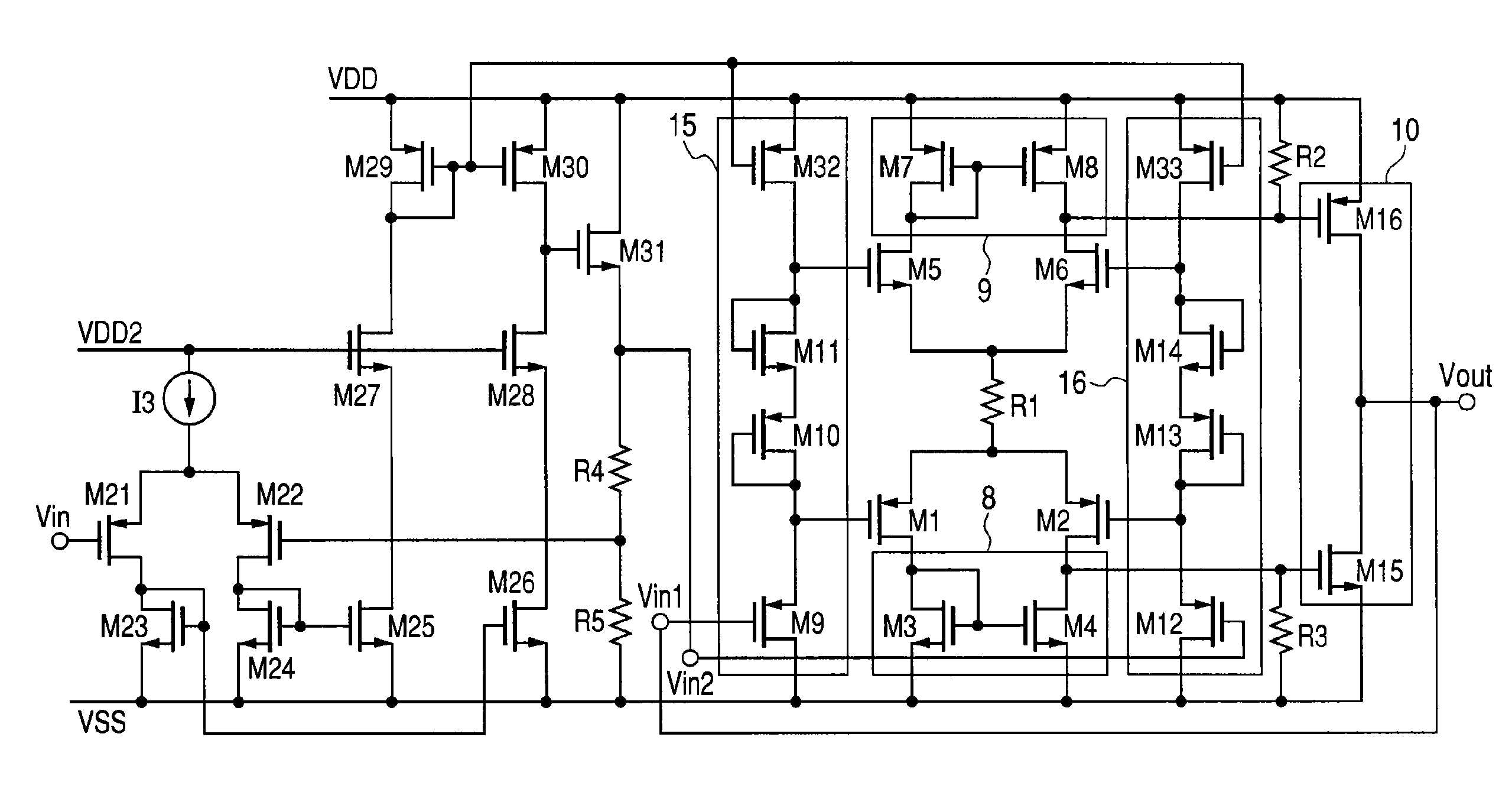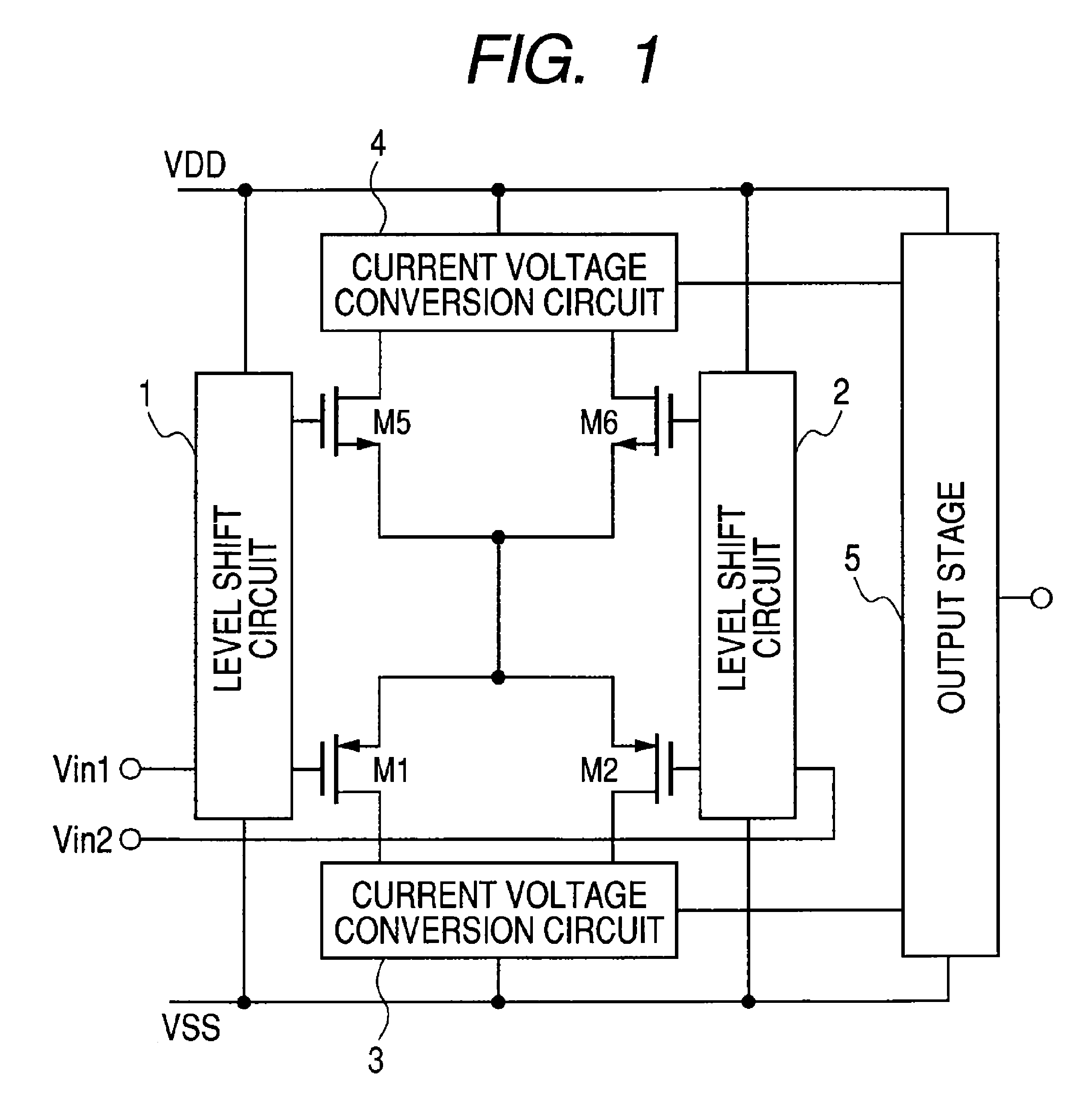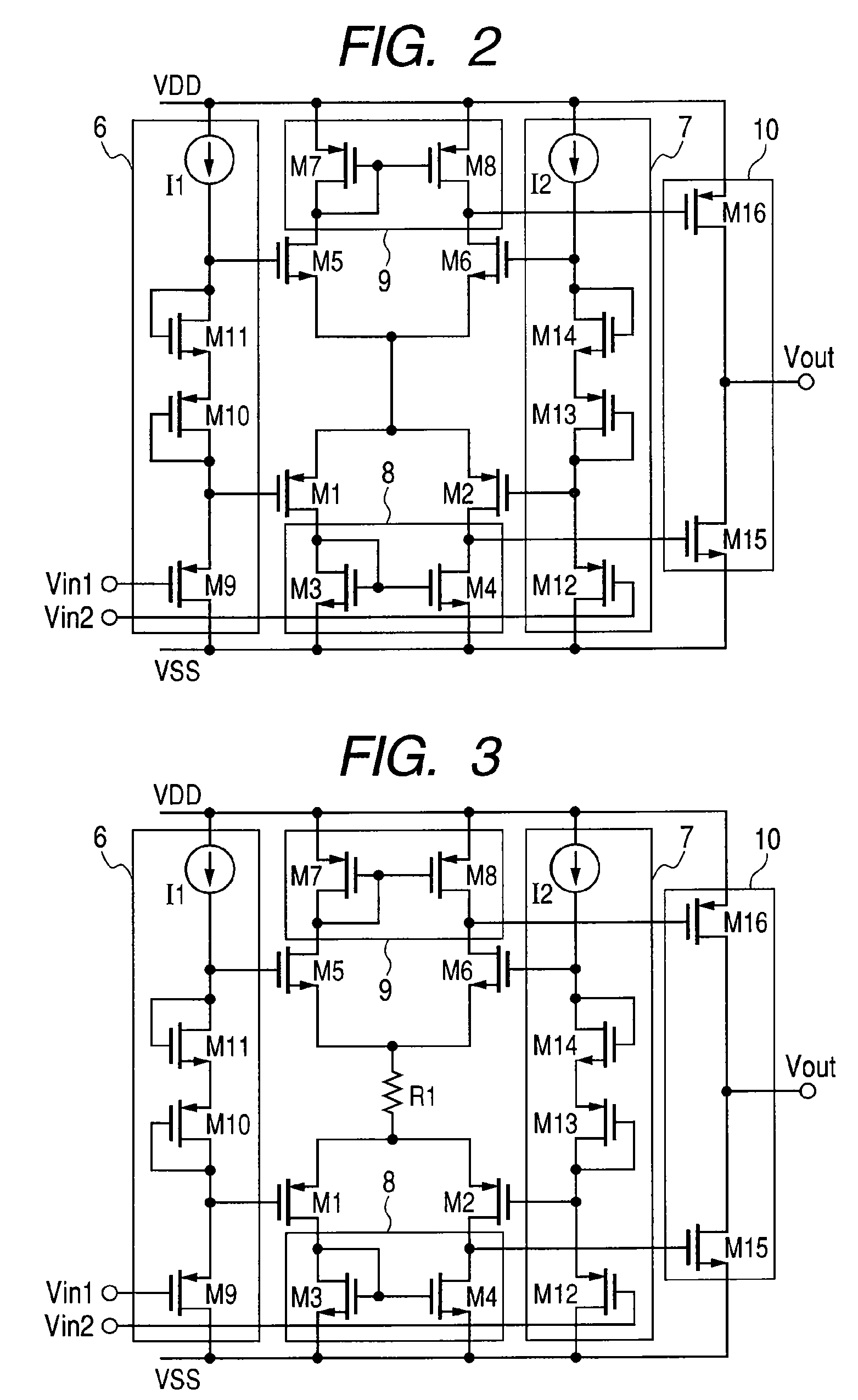Operational amplifier
a technology of operation amplifier and amplifier, which is applied in the direction of dc-amplifiers with dc-coupled stages, amplifiers with semiconductor devices/discharge tubes, and differential amplifiers. it can solve the problems of increasing power consumption, power consumption in each of the added circuits, and increasing power consumption. it reduces power consumption during idle state and improves slew ra
- Summary
- Abstract
- Description
- Claims
- Application Information
AI Technical Summary
Benefits of technology
Problems solved by technology
Method used
Image
Examples
first embodiment
[0023]FIG. 1 is a block diagram of an operational amplifier for describing the basic principle of the present invention. Input signals Vin1 and Vin2 are inputted to level shift circuits 1 and 2 respectively. Each of the level shift circuits 1 and 2 has two outputs to output two converted signals to a PMOS differential pair and an NMOS differential pair respectively. The PMOS transistors M1 and M2 are paired to form a differential transistor pair while the NMOS transistors MS and M6 are paired to form a differential transistor pair. The drains of the PMOS transistors M1 and M2 are connected to a current voltage conversion circuit 3 and the drains of the NMOS transistors MS and M6 are connected to a current voltage conversion circuit 4. Each of the current voltage conversion circuits 3 and 4 converts an output current of a differential transistor pair to a voltage used for driving an output stage 5.
[0024]In case of a general operational amplifier, a differential transistor pair is bia...
second embodiment
[0028]FIG. 2 shows a circuit diagram of an operational amplifier in this second embodiment of the present invention. PMOS transistors M1 and M2 make a differential transistor pair and NMOS transistors M5 and M6 make another differential transistor pair. The drains of those differential transistor pairs are connected to an active load 8 consisting of NMOS transistors M3 and M4 and another active load 9 consisting of NMOS transistors M7 and M8 respectively. The transistors M9, M10, and M11, as well as a current source I1 are combined to form a level shift circuit 6 while the transistors M12, M13, and M14, as well as a current source I2 are combined to form another level shift circuit 7. The M9 and M12 gates input signals Vin1 and Vin2 respectively and the NMOS transistor M15 and the PMOS transistor M16 are combined to form an output stage 10. And the M15 and M16 compose common source stage respectively to realize a high driving current and a wide output voltage range. Because the sour...
third embodiment
[0033]FIG. 3 shows an operational amplifier in this third embodiment of the present invention. In FIG. 3, a resistor R1 is used as a driving current control circuit. Because the resistor R1 is used in such a way, the current flowing in the subject differential transistor pair causes potential falling, which reduces the gate-source voltage of each transistor of the pair. Thus the current consumption can be reduced. In addition to the level shift circuits and differential transistor pairs, this embodiment can use another parameter that can control the driving current, thereby both the idle state current and the slew rate during operation can be controlled adjustably. If the R1 value increases, both the idle state current flowing in the differential transistor pair and the current flowing during operation can be reduced. While a resistor is used as a driving current control circuit in FIG. 2, the resistor may be replaced with another passive element, a transistor or the like.
PUM
 Login to View More
Login to View More Abstract
Description
Claims
Application Information
 Login to View More
Login to View More - R&D
- Intellectual Property
- Life Sciences
- Materials
- Tech Scout
- Unparalleled Data Quality
- Higher Quality Content
- 60% Fewer Hallucinations
Browse by: Latest US Patents, China's latest patents, Technical Efficacy Thesaurus, Application Domain, Technology Topic, Popular Technical Reports.
© 2025 PatSnap. All rights reserved.Legal|Privacy policy|Modern Slavery Act Transparency Statement|Sitemap|About US| Contact US: help@patsnap.com



